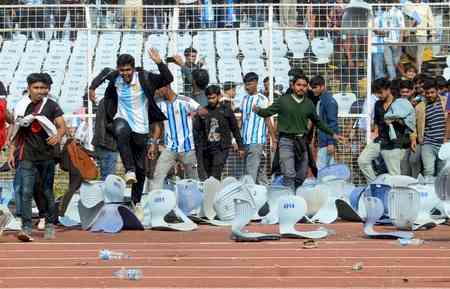Sole dependence on herbicides not enough for weed control in direct seeded rice
DSR considered relatively more prone to weed infestation as compared to transplanted rice

Ludhiana: As date for starting paddy sowing nears, scientists of Punjab Agricultural University, Ludhiana, have been issuing regular advisories directing farmers to use the DSR (Direct Seeding of Rice) technology with caution. Since, direct seeded rice (DSR) is considered relatively more prone to weed infestation as compared to transplanted rice; experts have urged farmers to follow all recommended practices since these allow easier management of weeds in DSR as compared to transplanted crop. Contrary to popular belief, chemicals (herbicides) are not the only long-term solution to manage weeds not just in DSR but in any other crop too. In this context, for weed management in DSR, the role of cultural practices (common sense farming practices) is as important as herbicides, warn university scientists.
In DSR, herbicides are sprayed at sowing and in standing rice crop. At sowing, Stomp/Bunker 30 EC (pendimethalin) at 1.0 litre/acre is sprayed in 200 litres of water, using flat fan (kat wali or flood jet (tak wali) nozzle. In case of tar-wattar DSR, spray is done immediately after sowing and, in case of dry DSR, when it is easy to walk in the field. This herbicide controls grass weeds like swank, madhana, makra, chini gha, takri gha and small seeded broadleaf weeds like itsit, chulai etc. Afterward, weeds can be controlled by hand weeding or by application of post-emergence herbicide, depending on weed flora present in the field. Use Nominee Gold/Macho/Taarak 10 SC (bispyribac sodium) at 100 ml/acre for control of swank and paddy motha; use Ricestar 6.7 EC (fenoxaprop-p-ethyl) at 400 ml/acre for madhana, leptochloa (chini gha), chiri gha and takri gha; and, use Almix 20 WP (chlorimuron ethyl + metsulfuron methyl) at 8 g/acre for paddy motha including gandi wala motha/dila and broadleaf weeds in 150 litres water. Always spray post herbicides in moist field, using flat fan nozzle.
Along with herbicides, following the practices of laser levelling of field and not using DSR on light textured soils reduces weed pressure significantly, and makes weed management easier. Experts also recommend adopting DSR in only those fields which were under rice in previous years; as opposed to fields which were under other crops like maize, sugarcane and cotton in previous years. Apply ‘rauni’ irrigation and sow rice in tar-wattar field. Soak seed in water for 10-12 hrs and treat with fungicide. Prefer ‘Lucky Seed Drill’ as it does sowing and spraying simultaneously. If not, then sow the crop in the evening or in early morning hours and spray herbicide immediately after sowing. It is very important to note that the first irrigation must be delayed to 21 days after sowing.
The adoption of above cited cultural practices, along with the use of right herbicide at the right time using the right method, makes weed management easier in direct seeded rice also.


 cityairnews
cityairnews 











